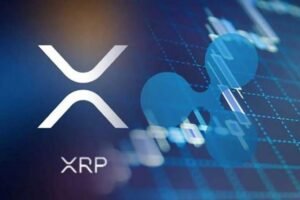Market Pulse
The convergence of artificial intelligence and blockchain technology continues to redefine the digital asset landscape. As of late 2025, projects explicitly integrating AI functionalities are attracting significant investor attention, promising novel solutions from decentralized machine learning to intelligent financial applications. Amidst this innovation surge, established players like Near Protocol and Bittensor have cemented their positions as frontrunners, leveraging their unique architectures to foster AI development. However, the crypto market is relentlessly dynamic, and emerging contenders, exemplified by the ‘XRP 2.0’ narrative surrounding Remittix, are challenging the perceived dominance, prompting a closer look at the competitive dynamics shaping this high-growth sector.
The AI-Crypto Confluence: A New Frontier
The synergy between AI and crypto extends far beyond mere buzzwords; it represents a fundamental shift in how decentralized systems can operate and offer value. AI algorithms can enhance blockchain security, optimize network performance, enable sophisticated data analytics on-chain, and even power autonomous agents within decentralized applications. Venture capital inflow into this sector has skyrocketed throughout 2025, signaling a strong institutional belief in AI-powered decentralized solutions. From personalized DeFi experiences to verifiable AI model training, the potential applications are vast and increasingly tangible, driving both technological advancement and market speculation.
Near Protocol: Empowering Decentralized AI Applications
Near Protocol, with its highly scalable, sharded blockchain and developer-friendly environment, has emerged as a preferred platform for building AI-centric decentralized applications. Its unique ‘Doomslug’ consensus mechanism and ‘Nightshade’ sharding design allow for high transaction throughput and low fees, crucial for data-intensive AI operations. Developers are increasingly leveraging Near for:
- Decentralized AI Data Marketplaces: Facilitating the secure and transparent exchange of datasets for AI model training.
- AI-Enhanced Smart Contracts: Building predictive analytics, automated trading strategies, and dynamic governance models powered by on-chain AI.
- Verifiable AI Model Training: Providing an immutable ledger for AI model provenance and performance, crucial for trust in AI outcomes.
Near’s robust ecosystem and ongoing integrations with AI development tools position it strongly to capture a significant share of the decentralized AI market.
Bittensor (TAO): The Decentralized Machine Learning Network
Bittensor (TAO) offers a fundamentally different approach, creating a decentralized, peer-to-peer network that incentivizes machine learning models. It functions as a global marketplace for intelligence, where AI models compete and collaborate, earning TAO tokens based on the value of the information they contribute. This innovative structure aims to:
- Democratize AI Development: Lowering barriers for researchers and developers to contribute and earn from their AI models.
- Foster Open-Source Innovation: Encouraging a collaborative environment where advancements benefit the entire network.
- Create a Global Brain: Building a collective intelligence that can be accessed and utilized by various applications.
Bittensor’s unique tokenomics and focus on intellectual property within AI make it a compelling and distinct player in the crypto AI space.
Remittix: The ‘XRP 2.0’ Paradigm Shift?
While Near and Bittensor represent established paradigms, the arrival of projects like Remittix, often lauded as an ‘XRP 2.0’ for its focus on speed, efficiency, and potentially AI-optimized financial transactions, injects a new layer of competition. Remittix aims to disrupt traditional cross-border payments and remittances by leveraging AI for hyper-efficient transaction routing, real-time fraud detection, and predictive liquidity management. Its core propositions include:
- AI-Powered Transaction Optimization: Utilizing machine learning to find the fastest and cheapest routes for global value transfer.
- Enhanced Compliance & Security: AI models provide continuous monitoring for regulatory adherence and mitigate financial crime risks.
- Scalable Micro-Payments: Designed for high-volume, low-value transactions with minimal friction, a hallmark of next-gen remittance solutions.
Remittix’s ambition to combine the speed and cost-effectiveness associated with XRP with advanced AI capabilities positions it as a potential disruptor, particularly in the financial sector where AI integration is becoming paramount.
Navigating the Competitive Landscape and Investment Outlook
The AI crypto sector, while burgeoning, is not without its complexities. Investors must weigh the distinct value propositions: Near as a versatile platform, Bittensor as a specialized intelligence marketplace, and Remittix as a targeted, AI-enhanced financial utility. Factors such as developer adoption, real-world utility, strategic partnerships, and evolving regulatory frameworks will heavily influence their trajectories. The risk of market saturation, technological obsolescence, and intense competition means that even promising projects must continuously innovate to maintain their edge. However, the overarching trend of AI integration into blockchain technology suggests robust long-term growth potential for truly impactful projects.
Conclusion
As October 2025 draws to a close, the crypto AI narrative continues to strengthen, with Near Protocol and Bittensor firmly holding their ground as foundational projects. Their respective approaches to empowering decentralized AI and fostering collective intelligence demonstrate the vast potential of this sector. Yet, the emergence of innovative challengers like Remittix, with its ‘XRP 2.0’ aspirations for AI-driven financial efficiency, underscores the dynamic and competitive nature of the digital asset market. Investors keenly watching this space recognize that while established leaders offer stability, disruptive newcomers ensure constant evolution, promising an exciting, albeit volatile, future for AI in crypto.
Pros (Bullish Points)
- Established players like Near and Bittensor possess robust technology and growing ecosystems for AI development.
- The broader AI-crypto narrative continues to attract significant investor interest and venture capital, indicating long-term growth potential.
- Emerging projects like Remittix introduce specialized, AI-enhanced solutions that can capture distinct market segments.
Cons (Bearish Points)
- Intense competition from both established and new projects could lead to market saturation and diluted returns.
- Regulatory uncertainty around AI-powered financial services could pose challenges for projects like Remittix.
- The high-growth nature of AI crypto makes it susceptible to speculative bubbles and increased volatility.
Frequently Asked Questions
What makes Near Protocol and Bittensor significant players in AI crypto?
Near Protocol provides a scalable, developer-friendly blockchain platform ideal for building AI dApps, while Bittensor offers a decentralized network incentivizing machine learning models and data sharing, fostering a 'global brain'.
What is Remittix and why is it called 'XRP 2.0'?
Remittix is an emerging project focused on AI-optimized cross-border payments and remittances. It's dubbed 'XRP 2.0' for its ambition to deliver extreme speed, low costs, and enhanced financial efficiency, powered by artificial intelligence.
What are the primary risks of investing in AI crypto tokens?
Key risks include high market volatility, intense competition leading to potential market saturation, regulatory uncertainties, and the possibility that some AI integrations may be more hype than tangible utility.






